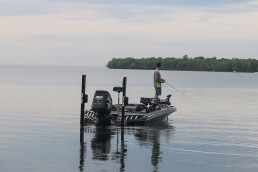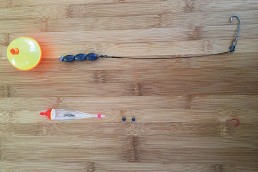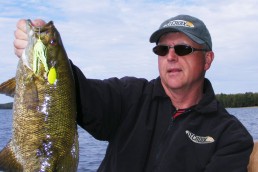Jerkin’ Cold-Water Bass
SHARE THIS POST
The jerkbait is a mighty fine tool for catching bigger, better bass all season long.
All season long?
Yes. I say that with confidence now, even though three years ago, those words would not have come out of my mouth. The truth is that I avoided jerkbaits for many moons. Zero confidence. Zero experience. Something about them just seemed confusing. Something about “pausing” seemed boring. Something about a suspending stick with hooks on it seemed like it just wouldn’t work because the bass could easily inspect and avoid it. But something about being really, really wrong can humble a person.
Jerkbaits work. No, they excel. These days, I always have a jerkbait tied on in every open-water fishing situation. Whether the water is 45 degrees or 95 degrees, some bass seem willing to smack a jerkbait on the pause. You must vary your color, cadence and retrieve at different times of the year. But early in the season when you have cold, clear water, I can think of no better offering for both covering ground and coaxing the big girls—of many species—to bite.
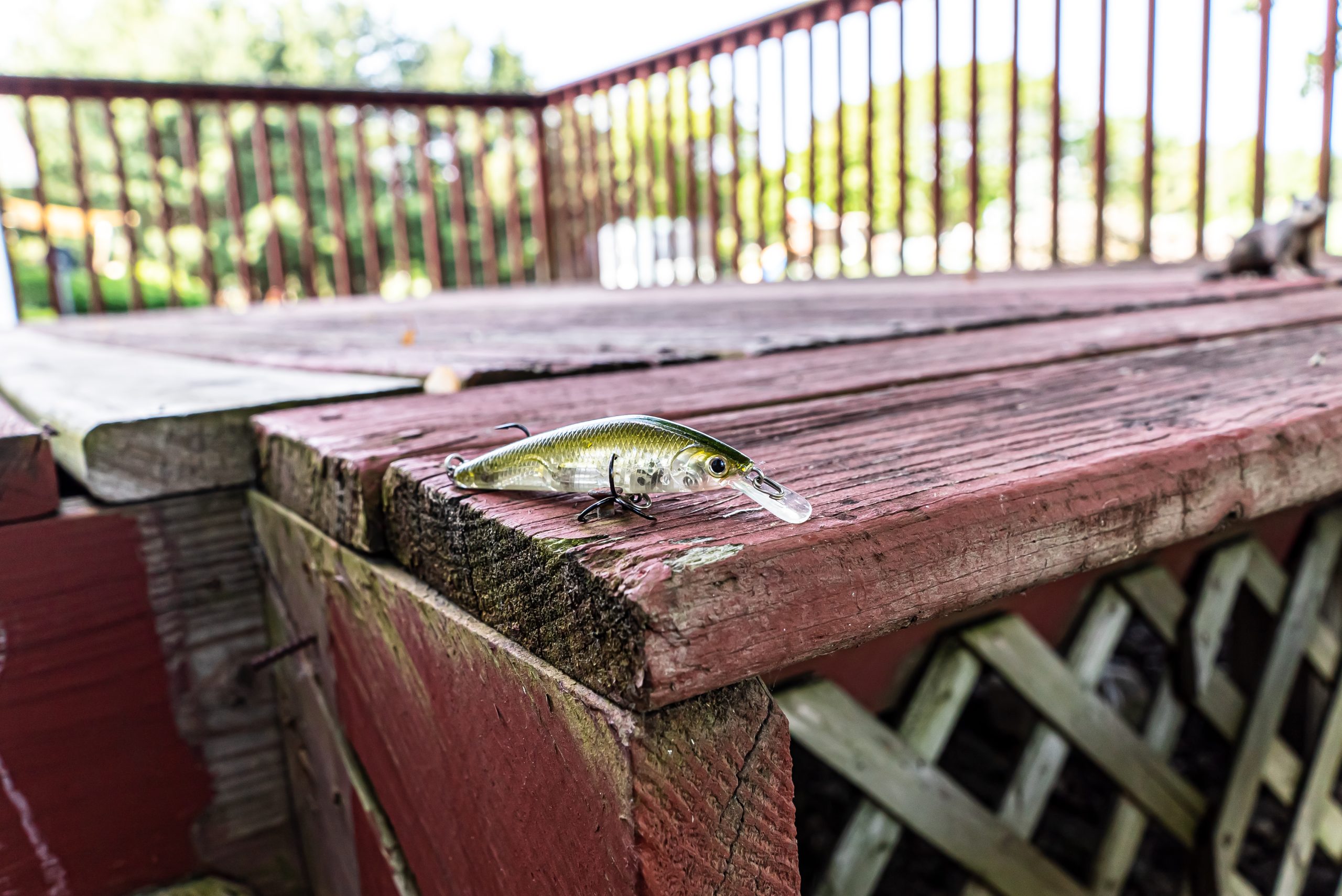
The first jerkbait I ever tied on was a Lucky Craft SK (Stacey King) Jerk 80 in a semi-transparent Ghost Olive Green Shiner color. Something about the high back and lifelike color made me feel like it might actually work.
It did.
My first day out was productive—but not pretty. The awkward, rudimentary cast & retrieve must have looked hilarious to any experienced anglers in the area. A brutish fling. An uncivilized twitch-twitch-twitch-pause-twitch-pause, hyperactive cadence. No stinkin’ idea what I was doing.
Doink!
A bite?! Well, no, a foul hook, but a 2-pounder. Wait, a 2-pounder? My first jerkbait bass came onto the shore in less than 10 minutes. Interesting, and a testament to the productivity of this presentation, even in the hands of a complete novice. This provided more confidence, and after another 15 minutes of overzealous casting…a second jerkbait fish joined me on the shore. This one was hooked in the mouth. She was also a beautiful 4-pounds specimen!
I was hooked. Pun intended.
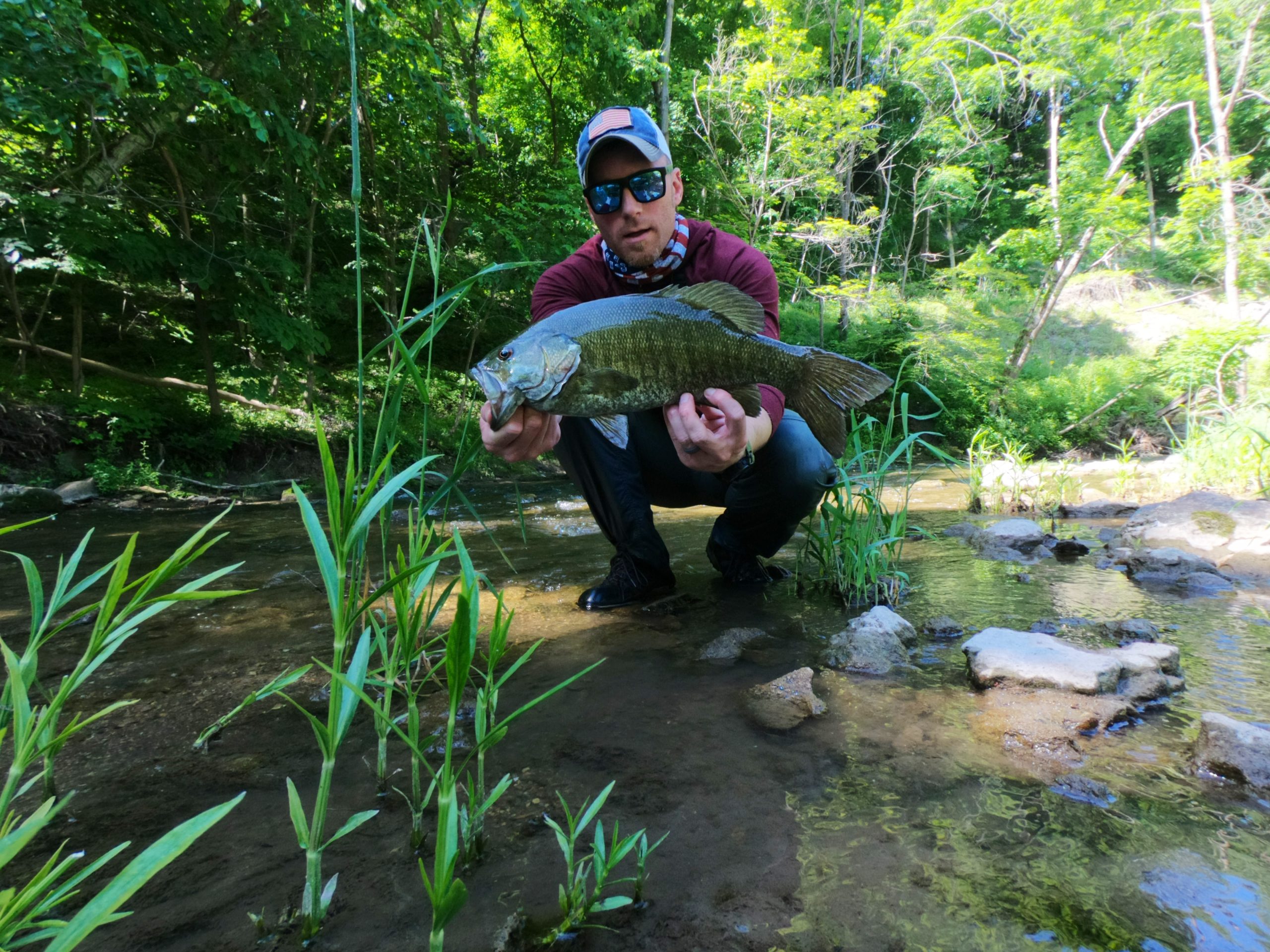
Alas, the Jerk 80 is no longer in production. But since that fateful afternoon, I’ve collected a few different jerkbaits that excel in different situations. (I’ve also thrown several away, because only keeping what works while discarding the clutter allows anglers to make better decisions.) The Lucky Craft Pointer 100 has replaced my SK Jerk 80. It dives about 5 feet, is 4 inches instead of 3.5 inches, and slightly heavier. Plus, it comes in about a billion colors and works well.
Another confidence jerk for me is the Rapala Husky Jerk 08 (HJ08) in either Yellow Perch or Olive Ghost. The latter is semi-transparent (notice a pattern here?) and it works well in clear-water situations. The Yellow Perch color does a great job of looking delicious in nearby creeks. Moving water typically carries sediment, and since jerkbaits are primarily a visual bait, the fish need to be able to see them on the pause. In these situations, a solid color is best. And at 3 1/8 inches, this bait is small enough to catch “fun fish” all day, but big enough to attract the attention of some monsters.
My biggest, meanest, creek smallmouth ever came on a small Rapala Husky Jerk.
Some fellas fish jigs all winter. Nothing wrong with that. Dragging deep can be productive. However, I’ll start my season in pure minimalist fashion, walking the bank with two rods, each with a different presentation: A jerkbait, and some sort of bottom-hugging bait for dragging. Usually a jig, a shaky head, or in some cases a Ned Rig.
Are you enjoying this post?
You can be among the first to get the latest info on where to go, what to use and how to use it!
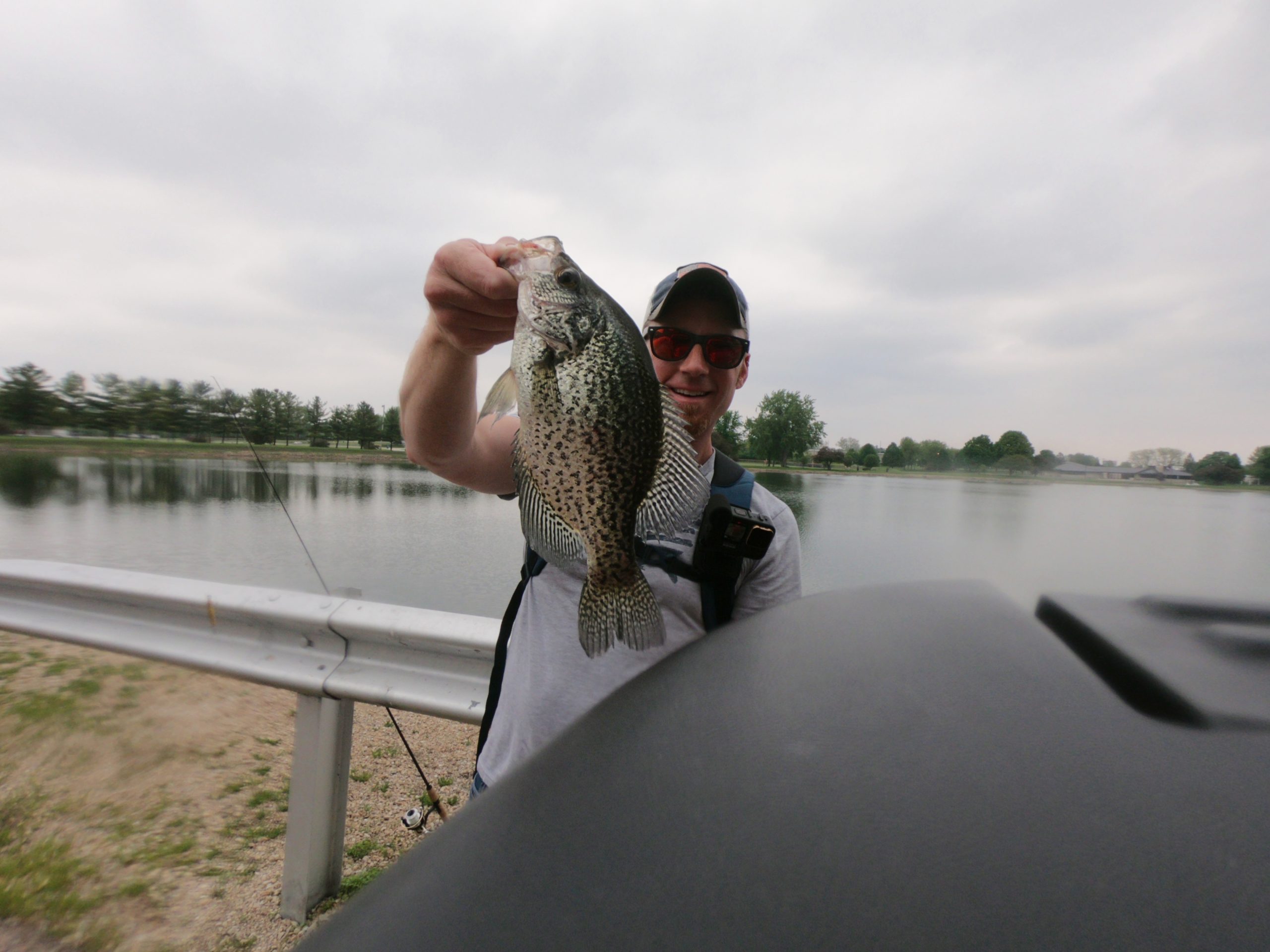
This method of bank fishing is great for those with limited time because it allows us to quickly explore our favorite body of water while looking for signs of change. When we see those signs, we can prepare to take full advantage of the upcoming flurry of activity.
As the weather mellows from the harsh bite of winter into something much less abysmal, the water begins to warm. Bass then transition from the cold-water period to pre-spawn and move into the shallows. This movement isn’t necessarily a one-and-done; there can be a bit of a yo-yo effect. The presence of baitfish and insect activity near the shore tends to pick up, which “pulls” bass in, but strong winds and dropping temps can “push” bass right back out!
Here in Illinois, the pre-spawn period typically kicks off sometime in April, but our state is “tall;” anglers in the north are going to see different conditions than those in the south. As the water moves up towards 60 degrees, activity in the shallows increases—but water temperature isn’t the only factor. Longer days with more sunlight also aid in rejuvenation.
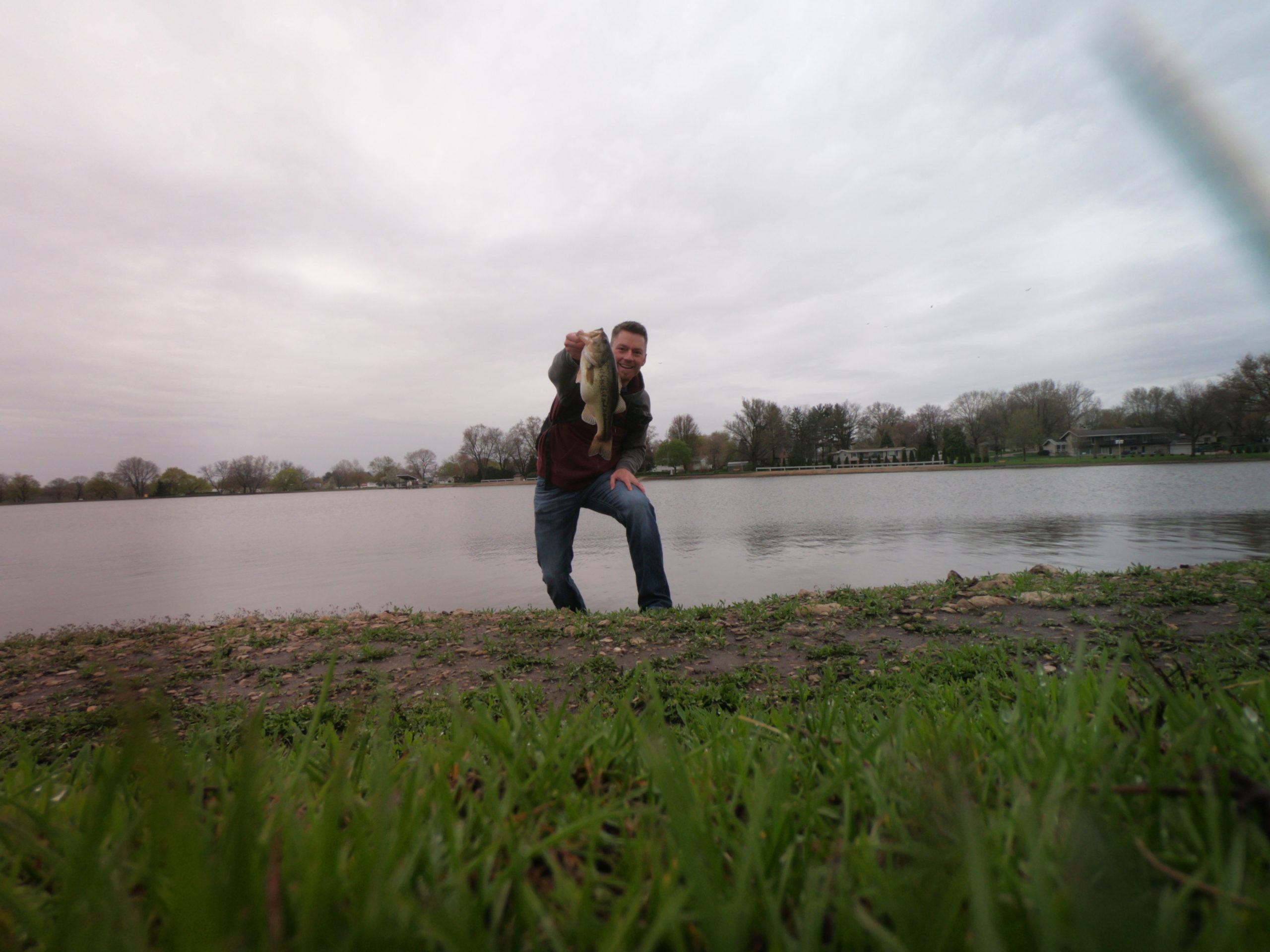
This is why I like to be on the bank, looking for signs of change. When I see ‘em…it’s go time!
The clear choice—in my humble opinion—in cold water is a suspending jerkbait. Remember that jerkbaits are a visual presentation, so you want to select something that bass can see. Bass typically won’t travel as far to strike a bait like this in stained water, but some days, jerks can certainly be effective.
You can usually enjoy surprisingly clear water during this time of the year. You can fish lakes that turn into pea soup around August in a completely different way. Low temps and less sunlight mean less algae cell production. Less plant growth. Less “green stuff” means higher visibility. Higher visibility means more fish on visual baits.
I like a spinning reel with 8-pound fluorocarbon for throwing jerks. Some guys like mono. Nothing wrong with either, but remember: fluoro sinks, mono floats. Suspending jerkbaits typically suspend in place better when using mono. Fluoro, on the other hand, can give your bait a nice, slow sink. Mono also has more stretch, which can help you avoid ripping sticky trebles out of the mouth of a fish. But on a really long cast, you won’t get as much hook penetration as you will with fluoro.
It’s a tradeoff, and like most things, it comes down to personal preference.
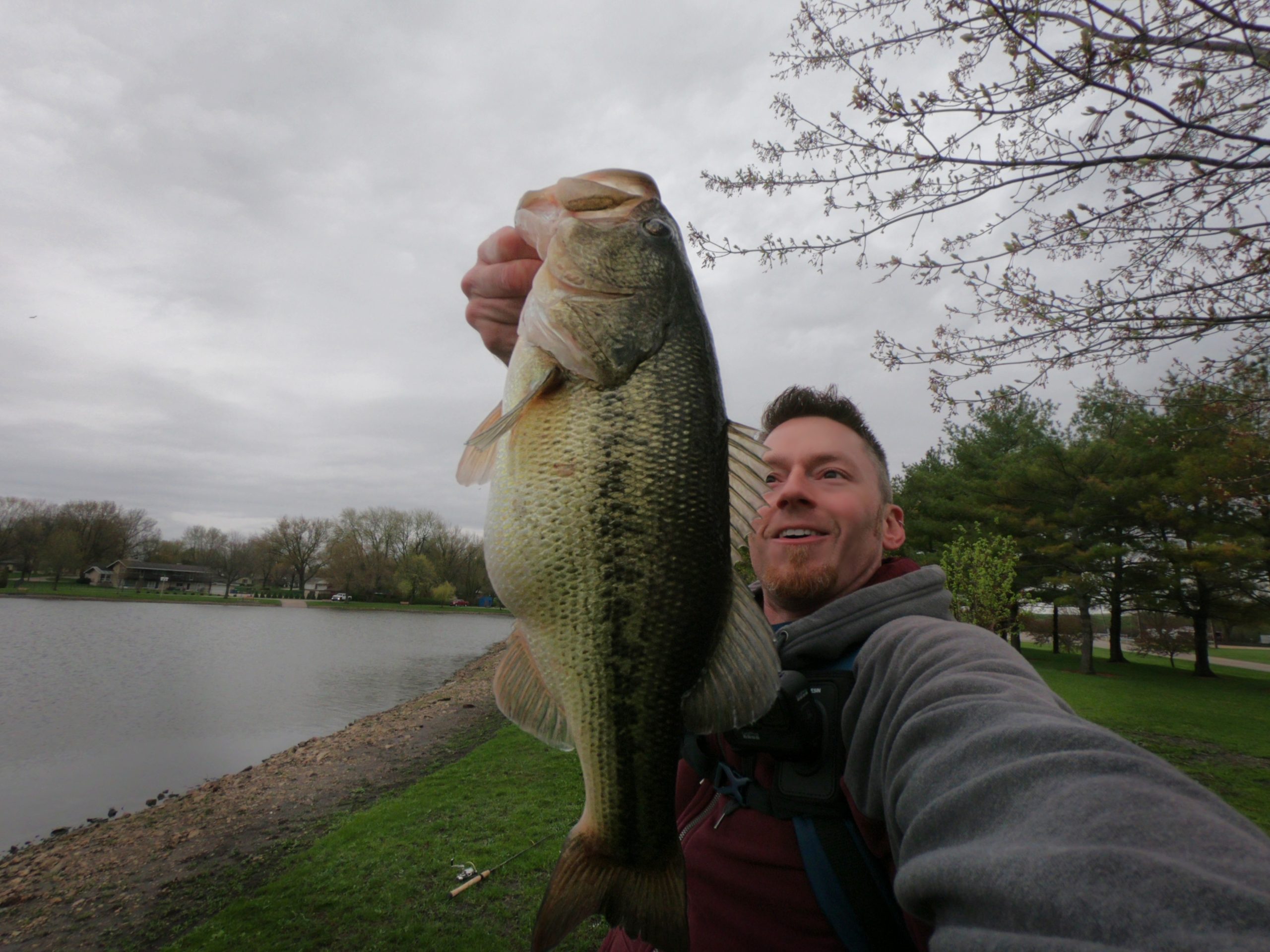
I like the slow sink that comes with fluoro. I’ll make a long cast, twitch, pause, then shimmy and shake my rod tip ever so slightly for a few seconds as the bait barely drops to mimic a dying baitfish before I make another twitch-twitch. Then pause, shimmy and repeat. (Working the shimmy into your retrieve is easy in cold weather, because after a while, your body will just shake automatically!)
In cold water, I almost never snap the bait. It’s cold. Things are slow-moving. You want to mimic an easy meal, not an Olympic athlete! Later in the year when the water is warm, a faster cadence with big snaps and jerks can come into play (along with deeper-diving jerkbaits). But for now, low & slow is the way to go.
The jerk bait is versatile, and one of the best ways that I know of to kick the season off. Take a few walks with a jerkbait in hand, make some casts, look for changes, breathe the crisp, fresh air—and get a leg up on other anglers.
Don’t forget to bundle up!
MWO
SHARE THIS POST
Did you enjoy this post?
You can be among the first to get the latest info on where to go, what to use and how to use it!
AJ Hauser
AJ Hauser is a fisherman, angling educator, and website designer/consultant from Ottawa, Illinois. To watch project videos, bait reviews, rigging tips and in-the-field escapades, visit TheMinimalistFisherman.com or contact aj@theminimalistfisherman.com.

